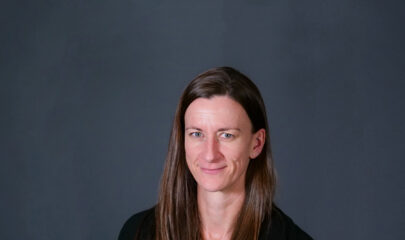The consequences of climate change are evident in many of the countries where Doctors Without Borders/Médecins Sans Frontières (MSF) teams work. These envi-ronmental changes have a direct impact on human health. In many places, they are exacerbating pre-existing crises and posing increasingly complex and interrelated chal-lenges for communities and organizations trying to support them.
The vast Sahel region is considered one of the areas hardest hit by climate change. Rising temperatures, erratic rainfall patterns and extreme weather events are aggravating the chronic health crisis in Chad, located in the region.
Ranked 182 out of 182 on the Notre Dame Global Adaptation Index, Chad is considered the fourth most vulnerable country to climate change and the second least prepared to adapt.
REGION WEAKENED BY CLIMATE CHANGE
Over the past 10 years, the Saharan and Sahelian zones of Chad have expanded by 150 kilometres to the south. Lake Chad has lost nearly 90 per cent of its surface area in the last 50 years. This desertification is leading to a reduction in cultivation and grazing areas and forcing communities to move, whether to find land, food or work.

their progress in MSF’s nutrition program. Chad, 2022. © Claudia Blume/MSF
“Most of the men in the region have left for N’Djamena [the capital], Niger or Sudan to earn money for their families,” says Kalfoule Allioueur, who is in charge of the health centre in the village of Kekekonkia.
More and more erratic rainfall patterns that cause alternating periods of intense drought and severe flooding increase food insecurity in communities.
“There was very little rain this year. It was worse than any year I can remember,” says Khadija Iba, a woman at the MSF therapeutic feeding centre with her child in Massakory, a small town in Chad’s Sahel belt. “We have hardly harvested anything. We have to buy vegetables from the market, but everything costs almost twice as much now. We don’t have enough to eat.”
WATER CRISIS
In a focus group discussion held at Massaguet Urbaine in February 2022, women talked about how changes in rainfall patterns have created a water crisis.
“The water crisis started three years ago,” says one of the group participants. “This year the rain stopped. It didn’t even last two months. In the fields, they didn’t even harvest a single bag.”
The situation was particularly challenging in 2021 and early 2022, when the unusually short rainy season led to supply difficulties.
“We have two wells in my village, but it’s not enough for all the people and animals,” says Khadidja Mahamat, a woman from the village of Tchoulmari Boltouri. “To get drinking water, I have to ride a donkey to another village. I go there twice a day. It takes me an hour and a half each way.”
“Because of the floods, it is even harder to reach a health centre quickly and see a doctor.”
Malnutrition is a recurrent, chronic crisis in Chad. Children under five and pregnant and lactating women are particularly affected. The causes of malnutrition are complex and include poor harvests, inadequate dietary options as well as socio-cultural and environmental factors. In 2021, the situation was made more challenging by an unusually short rainy season. The bad water quality causes diarrhea and other health issues, increasing the risk for children of being malnourished.

in MSF’s nutrition project. Chad, 2022. © Claudia Blume/MSF
TOO MUCH OR TOO LITTLE: FLOODS AND DROUGHT
“We are afraid for the future,” says Osman Abakar, a resident of a village near Massakory. “All we can do is wait for the next rains. If the rain leaves us again, we won’t know what to do.”
Years of drought in Chad have led to a major malnutrition crisis, while floods in 2022 displaced nearly 155,000 people and led to the proliferation of waterborne diseases.
“These latest floods have exacerbated an already dire humanitarian situation,” says Alexis Balekage, MSF’s emergency response project coordinator in N’Djamena. “Ponds of stagnant water are likely to become breeding grounds for mosquitoes, increasing the risk of malaria transmission, one of the main causes of child mortality in Chad.”
ACCESSING HEALTHCARE
Already difficult, access to healthcare is also compromised by extreme weather events.
“Because of the floods, it is even harder to reach a health centre quickly and see a doctor,” says Doglessa, a woman who has taken refuge at the Walia Hadjarai site in N’Djamena for people who are displaced.
Over the past several years, MSF teams have responded to numerous crisis situations in several regions of Chad. Our emergency intervention to manage severe child malnutrition during the lean season between harvests in N’Djamena has evolved into a program to better meet the needs of families and children throughout the year.
In eastern and southern Chad, MSF teams provide medical care and assistance to displaced people and local communities who struggle with a lack of access to food.
In addition to projects in Sila, Masakory and Moissala, MSF responds to emergencies, such as disease outbreaks, natural disasters, malnutrition, displacement and conflicts, and fills gaps in the health system, including support for women’s health, maternal and pediatric care.


